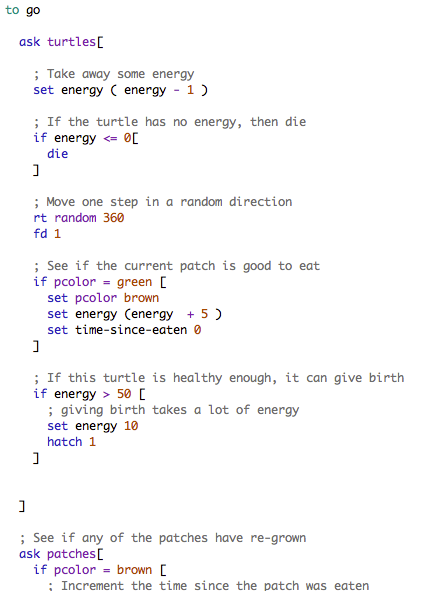
go procedure, after the turtle
has decided whether or not a patch of grass is good to eat:
if energy > 50 [
set energy 10
hatch 1
]
That's it! The code above checks to see if the turtle has more than 50 units of
energy stored up. If it does, then we reduce the amount of energy to 10 (to simulate
the stress of giving birth) and then use the hatch command to create
a copy of the turtle.
grass-regrow-time slider. If you change the amount of time it takes for
grass to re-grow, does this have an impact on the number of turtles in the model?